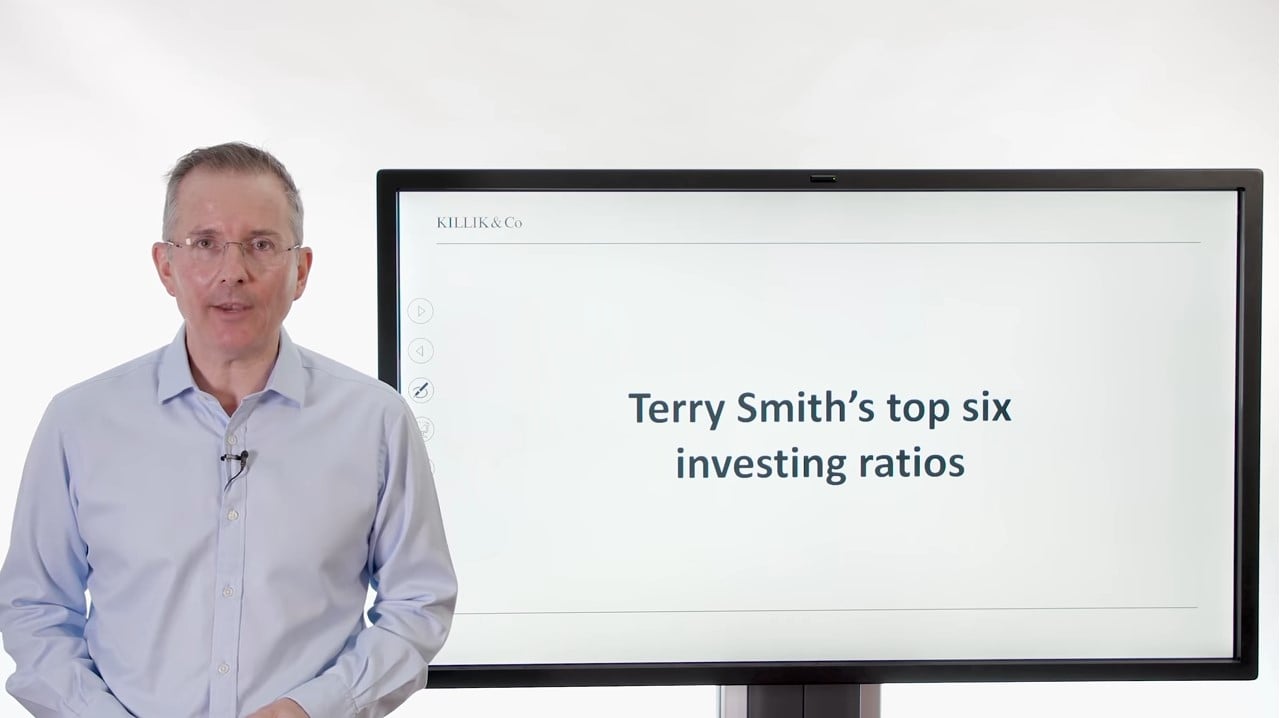Award-winning retail fund manager Terry Smith likes to keep investing simple. Tim Bennett sums up six of his preferred analytical tools.
Killik Explains: Terry Smith’s Top Six Investing Ratios
Q1 hedge fund letters, conference, scoops etc
Transcript
Welcome to this Killik explains finance video. This week Terry Smith's top six investing ratios. Question number one which really most investors you know the answer to these days. Who is Terry Smith and then what are his top six. So Terry Smith is one of the UK most successful fund managers and CEO of funds Smith. He's been many many things in his career. He authored accounting for growth. This is the guy who does know about stripping manages to pieces analyzing them building up a picture of a company's performance and position. And his investment approach is seemingly quite straightforward to say a little bit harder to execute. I want to give you just a picture of the numbers that he thinks matter when it comes to screening companies. Now his basic games all what reasonable buy good companies. I know a lot of what I say right now will be focused on that.
How do you do it. How do you even start to look for them. Don't overpay and hold onto them. Identify good companies. And Terry Smith is interested in established brands that are generating profits and cash flow. He's north into the fly by night of the technology world for example. Other people are. He's not. Don't overpay. Hold onto them. Let's leave 2 and three to one side slightly here and focus on. Well how do you go about screening good companies now. No I mean there's look a simple what makes for a good business. The reality is you need to do lots of homework. Yes there's lots of years and you need to reach other judgments around the edges but fundamentally where do you start. What's in your your matrix if you like. Well Terry Smith There are three questions. Is the business profitable. And he is interested in profitable businesses. Some people will buy them when they're not making profits but even selling very much. That's not the space he's occupy. So gross margin operating margin and Rocky there's three. One two three. And we're looking for six. All right. Well not all profits alone not enough. So is this cash generative and well-run always can the business convert profits into cash on a consistent basis and for him that's something else that's I think the cash conversion ratio more coming up in a moment is a snapshot.
And then is it financially stable so it's profitable it can generate cash is it financially stable. So taking a long term view remember is hanging over these companies the long term is not day trading. So leverage and interest cover are traditional ratios that give a good snapshot on basically whether the company is financially stable or not. So kind of glossed over some of the technical detail here and just paint a picture as to why these are important numbers. Right profitability first three ratios coming up gross profit margin first of all seemingly simple very important calculation. So technically it is the gross profit as a percentage of sales. That's actually how you do it. If you like what does it reveal reveals the core profitability of the business. By that I mean if your business is very simple you are simply buying in something like sandwiches from a supplier putting your label on them and then selling them for more money hopefully for more money. You will have a gross profit margin on that transactions. Think of our food retailer like Marks and Spencer buying the supplier repackaging selling on. Okay now that is not the whole picture. Not everything that business does but the gross profit margin targets. Your basic concept as a business says Is it profitable. Terry Smith wants the answer to be yes. And what's more he wants a decent gross profit margin because that will reveal remedies the long term strategy your ability to absorb shocks a high margin gives you the ability to absorb shocks whether those be short term reductions in selling prices short term cost ingredients suppliers whatever it might be. But I did say gross margin isn't the whole picture. So how would you complete the picture.
Operating profit margin. In other words there is a point where when I ask the question what's the operating profit as a percentage of sales taking account all operational costs so this activity of buying sandwiches from suppliers repackaging them selling them on. What about the warehousing that's needed. What about the staff costs. Well is where you have your selling distribution and administration costs. They need to be factored in that will reduce your gross margin a bit. But it's a good measure of cost control. So again Terry Smith is looking the businesses that generate operating profit not losing money at this level. They have a good ability to control costs convert gross profit into operating profit. And then thirdly return on capital employed PEG ratio mixes the profit loss account and the balance sheet. This is your bank but as an investor in the business. Why. Because it looks at paper or eBay which is taking away same profit before tax and interest. So we're looking again at core profitability after all costs minus interest which is pure financing not tax because that has a rules as a percentage of total equity plus debt. Otherwise it's the return to all the people that provided finance with the debt holders or equity holders.






